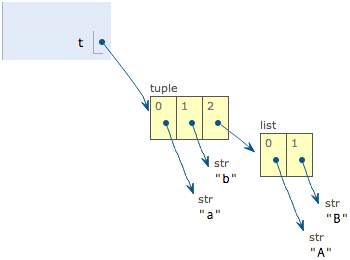#!/usr/bin/env python
#
# Copyright 2009 Facebook
#
# Licensed under the Apache License, Version 2.0 (the "License"); you may
# not use this file except in compliance with the License. You may obtain
# a copy of the License at
#
# http://www.apache.org/licenses/LICENSE-2.0
#
# Unless required by applicable law or agreed to in writing, software
# distributed under the License is distributed on an "AS IS" BASIS, WITHOUT
# WARRANTIES OR CONDITIONS OF ANY KIND, either express or implied. See the
# License for the specific language governing permissions and limitations
# under the License.import markdown
import os.path
import re
import torndb
import tornado.auth
import tornado.httpserver
import tornado.ioloop
import tornado.options
import tornado.web
import unicodedatafrom tornado.options import define, options
#定义一些通用的配置信息,比如数据库的连接信息,端口信息
define("port", default=8888, help="run on the given port", type=int)
define("mysql_host", default="127.0.0.1:3306", help="blog database host")
define("mysql_database", default="blog", help="blog database name")
define("mysql_user", default="root", help="blog database user")
define("mysql_password", default="sa123", help="blog database password")#定义Application信息,它是继承tornado.web.Application 的
class Application(tornado.web.Application):
# __init__ 函数自动调用
def __init__(self):
#这里就是url对应的控制器,下面分别对应一个类,来处理里面的逻辑
handlers = [
(r"/", HomeHandler),
(r"/archive", ArchiveHandler),
(r"/feed", FeedHandler),
(r"/entry/([^/]+)", EntryHandler),
(r"/compose", ComposeHandler),
(r"/auth/login", AuthLoginHandler),
(r"/auth/logout", AuthLogoutHandler),
]
#设置,如博客标题,模板目录,静态文件目录,xsrf,是否调试
settings = dict(
blog_title=u"Tornado Blog",
template_path=os.path.join(os.path.dirname(__file__), "templates"),
static_path=os.path.join(os.path.dirname(__file__), "static"),
ui_modules={"Entry": EntryModule},
xsrf_cookies=True,
cookie_secret="__TODO:_GENERATE_YOUR_OWN_RANDOM_VALUE_HERE__",
login_url="/auth/login",
debug=True,
)
#然后调用tornado.web.Application类的__init__函数加载进来
tornado.web.Application.__init__(self, handlers, **settings)# Have one global connection to the blog DB across all handlers
#数据库连接信息
self.db = torndb.Connection(
host=options.mysql_host, database=options.mysql_database,
user=options.mysql_user, password=options.mysql_password)#基类,继承自tornado.web.RequestHandler 的,后面的类都是继承这个类的
class BaseHandler(tornado.web.RequestHandler):
#属性装饰器,使db函数变成一个属性,便于后面直接使用
@property
def db(self):
return self.application.db
#获得当前的用户
def get_current_user(self):
user_id = self.get_secure_cookie("blogdemo_user")
if not user_id: return None
return self.db.get("SELECT * FROM authors WHERE id = %s", int(user_id))#首页
class HomeHandler(BaseHandler):
def get(self):
#query 查询很多列
entries = self.db.query("SELECT * FROM entries ORDER BY published "
"DESC LIMIT 5")
if not entries:
#redirect 重定向到一个url
self.redirect("/compose")
return
#render 渲染一个模板,后面是参数
self.render("home.html", entries=entries)
class EntryHandler(BaseHandler):
def get(self, slug):
#get 得到一个值
entry = self.db.get("SELECT * FROM entries WHERE slug = %s", slug)
#raise 触发一个错误信息,后面必须接类型
if not entry: raise tornado.web.HTTPError(404)
self.render("entry.html", entry=entry)
class ArchiveHandler(BaseHandler):
def get(self):
entries = self.db.query("SELECT * FROM entries ORDER BY published "
"DESC")
self.render("archive.html", entries=entries)
class FeedHandler(BaseHandler):
def get(self):
entries = self.db.query("SELECT * FROM entries ORDER BY published "
"DESC LIMIT 10")
self.set_header("Content-Type", "application/atom+xml")
self.render("feed.xml", entries=entries)
class ComposeHandler(BaseHandler):
#装饰器
@tornado.web.authenticated
def get(self):
id = self.get_argument("id", None)
entry = None
if id:
entry = self.db.get("SELECT * FROM entries WHERE id = %s", int(id))
self.render("compose.html", entry=entry)@tornado.web.authenticated
def post(self):
id = self.get_argument("id", None)
title = self.get_argument("title")
text = self.get_argument("markdown")
html = markdown.markdown(text)
if id:
entry = self.db.get("SELECT * FROM entries WHERE id = %s", int(id))
if not entry: raise tornado.web.HTTPError(404)
slug = entry.slug
#execute是执行的意思
self.db.execute(
"UPDATE entries SET title = %s, markdown = %s, html = %s "
"WHERE id = %s", title, text, html, int(id))
else:
slug = unicodedata.normalize("NFKD", title).encode(
"ascii", "ignore")
slug = re.sub(r"[^\w]+", " ", slug)
slug = "-".join(slug.lower().strip().split())
if not slug: slug = "entry"
while True:
e = self.db.get("SELECT * FROM entries WHERE slug = %s", slug)
if not e: break
slug += "-2"
self.db.execute(
"INSERT INTO entries (author_id,title,slug,markdown,html,"
"published) VALUES (%s,%s,%s,%s,%s,UTC_TIMESTAMP())",
self.current_user.id, title, slug, text, html)
self.redirect("/entry/" + slug)
class AuthLoginHandler(BaseHandler, tornado.auth.GoogleMixin):
@tornado.web.asynchronous
def get(self):
if self.get_argument("openid.mode", None):
self.get_authenticated_user(self.async_callback(self._on_auth))
return
self.authenticate_redirect()
#这里定义一个函数,来供上面调用
def _on_auth(self, user):
if not user:
raise tornado.web.HTTPError(500, "Google auth failed")
author = self.db.get("SELECT * FROM authors WHERE email = %s",
user["email"])
if not author:
# Auto-create first author
any_author = self.db.get("SELECT * FROM authors LIMIT 1")
if not any_author:
author_id = self.db.execute(
"INSERT INTO authors (email,name) VALUES (%s,%s)",
user["email"], user["name"])
else:
self.redirect("/")
return
else:
author_id = author["id"]
self.set_secure_cookie("blogdemo_user", str(author_id))
self.redirect(self.get_argument("next", "/"))
class AuthLogoutHandler(BaseHandler):
def get(self):
self.clear_cookie("blogdemo_user")
#get_argument为获得next参数的值,默认为"/"
self.redirect(self.get_argument("next", "/"))
class EntryModule(tornado.web.UIModule):
def render(self, entry):
return self.render_string("modules/entry.html", entry=entry)#入口函数
def main():
tornado.options.parse_command_line()
#创建一个服务器
http_server = tornado.httpserver.HTTPServer(Application())
#监听端口
http_server.listen(options.port)
#启动服务
tornado.ioloop.IOLoop.instance().start()#调用的入口
if __name__ == "__main__":
main()
最后总结一下:
1)tornado框架中提供的几个demo,都是以这种形式来创建一个应用的
2)对每一个控制器函数,要么是,只可能有2个对外的函数,一个是get,一个是post
3)数据库有3中调用方式,query,get,exec
4)获取参数的值使用 get_argument 函数
5)重定向用redirect 函数
6)所有的函数都是属性这个类的,所有都用self调用
7)渲染模板用render函数
本文tornado框架blog模块分析与使用到此结束。生活不会惯着你,想要不被抛弃,必须自己争气。小编再次感谢大家对我们的支持!





